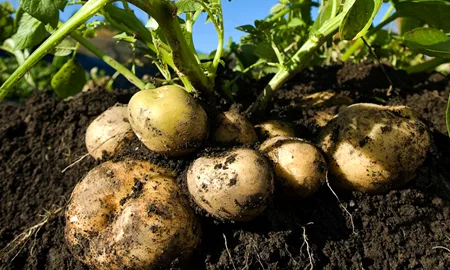
Potato yields have stagnated, so what can growers do to improve performance? We look at what can be done to easily increase yields by 10% or more.
Author
| 25th August 2021Tags
Overcoming the barriers to better potato yields: 6 steps to better performance
For more than a decade potato yields in Great Britain have remained broadly flat at a little more than 45 t/ha (see fig. 1). There are many reasons for this stagnating performance, not least that our maritime climate means the weather is ‘mainly cloudy’. That means our crops enjoy less intense solar radiation than those on a similar longitudinal plane (see fig. 2). There are other contributing factors, namely irrigation practices and nutrient management, and also the diversity of crops. Short-season salads distort the average performance by acting as a drag on higher-yielding wares.
While performance-limiting factors such as the weather are outside the control of growers, there are others within their grasp that if tackled could result in some significant improvements, says Mark Stalham, formerly Head of NIAB CUF and now an independent consultant with Mark Stalham Potato Consultancy Ltd.
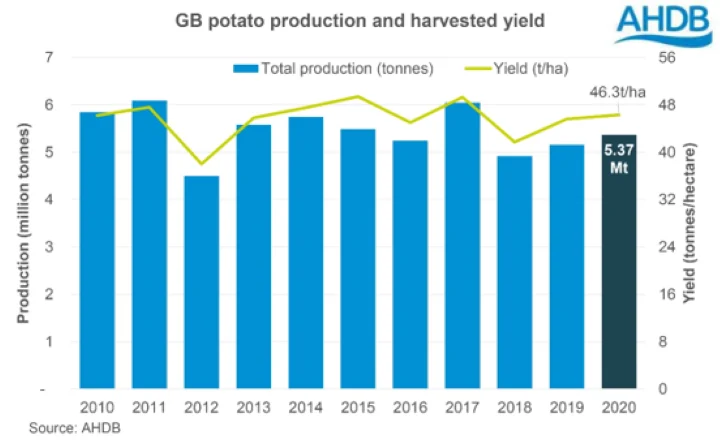
Fig. 1. Average yields increased significantly in the second half of the last century, but have broadly flatlined since the year 2000
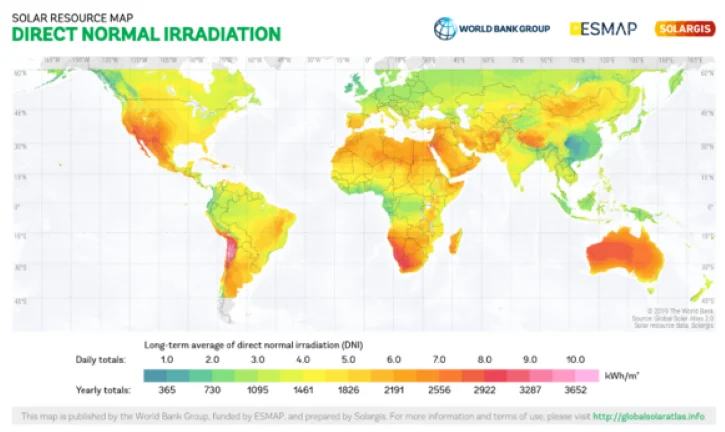
Fig. 2. Weather patterns mean Great Britain and north-west Europe receive less intense daytime sunlight than North America or much of Asia.
During his career as a potato researcher at Cambridge University Farms (CUF) every aspect of crop production was scrutinised to understand its contribution to performance. From seed quality and spacing at planting through to irrigation and fertiliser management to the impact of sunshine, rainfall and temperature.
Over time, these learnings contributed to a gradual, but sustained improvement in performance. In nearly 30 years of trials that began in 1990, irrigated crops of Cara and Estima produced an average yield of about 62 t/ha. The worst performance occurred in 2012 when the wettest year on record served to drive down yields to little more than 40 t/ha. Conversely, the best performance was recorded in the otherwise largely average season of 2013. That year’s irrigated Estima recorded a not untypically high yield of nearly 80 t/ha, but the real surprise was the irrigated Cara which produced a crop of almost 100 t/ha, while a crop of Maris Piper yielded 99 t/ha, equivalent to 22.3 t/ha dry matter and close to the theoretical limit.
Research suggests that yields as high as 160 t/ha may be possible in systems where potential is not constrained by irrigation or sunlight. With a very low dry matter variety such as Volare, fresh weight yields of around 124 t/ha were achieved in the high-yielding 2013 season. In Washington State, USA, yields in new clone plots have reached 142 t/ha. For growers in Great Britain, a target of 100 t/ha is not unreasonable, says Dr Stalham although he concedes that it may be beyond most. Nevertheless, the work of CUF demonstrates that there is room for improvement in most situations.
“It is within the grasp of all growers to improve average yields by at least 10% simply through more astute management. Given the fine margins between a respectable performance and a poor one, I don’t know of a single grower who wouldn’t take such an improvement [to performance] if offered to them,” says Dr Stalham.
1. Considerations at planting
Rainfall and sunshine are arguably two of the most important factors determining performance but while Mother Nature means neither are under the control of growers, there are actions that can exploit the situation for the better.
Planting direction can affect performance. Crops planted north to south will intercept less light than those planted north-west to south-east, but field shape and aspect may mean this is not practical as irrigation efficiency can be compromised.
“There are many factors affecting performance, but efforts to improve output should begin with the soil. Great importance is often attached to seed spacing, but often at the expense of more significant factors. Planting depth is more critical than seed spacing. Crops planted into beds tend to yield better than those in rows, but bed width is also important. Research shows that optimal yield occurs in beds at 81 cm (32 inches) wide. In continental Europe the standard width is 75 cm (30 in) and yet in the UK we favour 91 cm (36 in),” says Dr Stalham.
The impact of compaction
There may be good reasons why growers favour wider beds than is the optimum, but it comes at a cost to performance. Developing a system that suits the situation often involves a series of compromises. Compaction is one of the greatest hindrances to better performance. There is no satisfactory reason for why it should be left uncorrected.
“Compaction is getting worse, and it has much to do with travelling when the soil is too wet to carry the load inflicting damage at a depth below that which can be remedied. Planting when soils are at their plastic limit at cultivation depth will result in yield-limiting damage,” explains Dr Stalham.
To some, damage from compaction is easily repaired through subsoiling, but this is to misunderstand the issue, says Dr Stalham.
“The effects of compaction far outweigh the benefits of subsoiling. Yield losses from several compaction experiments are on average 18 t/ha while the mean benefit of sub-soiling from substantially more experiments is roughly 4 t/ha.”
The difficulty in avoiding compaction is that it occurs at all depths. The most significant is that below the planting depth as it is moisture critical, but even where it occurs in the row or bed it can hinder root development and moisture infiltration.
Raise the de-stoner
The difficulty in tackling some of the yield-limiting factors is that many of them are largely invisible. More often the focus is only the visible aspects of production such as irrigation or the need to make routine treatments such as nematicides or fungicides. Technical considerations fail to receive the attention they deserve, says Dr Stalham.
“Destoning plays a critical role in supporting damage-free potatoes with depth one of the most important aspects of this operation. Deeper than 27 cm and there is a gradual fall in yield as compaction and slumping increase. In many situations, reducing destoning depth by 4 to 6 cm can have a positive effect on yield. It will also reduce operational costs and increase efficiency.”
2. Nutrition
Theoretically a 100 t/ha crop could take up 400 kg N/ha, the question confronting growers is how to meet this demand and does it mean that current practices are falling short of the crop’s requirements? There is no short answer.
“Application rates of both nitrogen and phosphate have fallen over time but this does not mean crops are under supplied. Phosphate rates are roughly half what they were in the mid-1980s but are broadly in line with what is removed by the crop.
“Nitrogen rates too have fallen and are now roughly 75% of that applied in the mid-1980s while average crop yields are up about 16%. This is because we have learned that timing of application is more significant than quantity applied (see table 1). As a result, the bulk is typically applied at planting and the ‘efficiency’ of nitrogen applied has increased from 188 kg of tubers per kg N in the mid-1980s to 302 kg of crop per kg N,” says Dr Stalham.
Table 1: The effect of nitrogen timing and application rate on yield
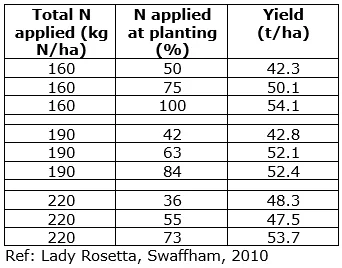
As with all crops, the relationship between nitrogen uptake and crop growth is not linear. Response is influenced by a range of factors. In potatoes, nitrogen uptake peaks at roughly 30-40% ground cover, but rate of growth is heavily influenced by soil conditions at the time of cultivation, and season length. Compaction has been shown to heavily influence nitrogen uptake (see fig. 3). To grow close to 100 t/ha, crops need to take up close to 8 kg N/day at their peak uptake rate, but compaction and water supply often limit this.
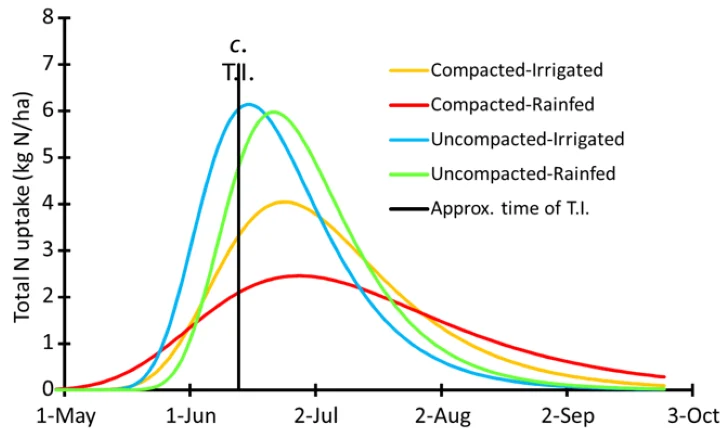
Fig. 3. The effect of compaction and irrigation on nitrogen uptake
Ref: CUF, 2006; cv. Maris Piper
3. Pests, disease and virus
Except for late blight (Phytopthora infestans), which can result in complete foliar destruction, and stem canker caused by Rhizoctonia solani, which if severe can also result in complete crop loss (see table 2), the effect of disease on gross yield is often small.
The importance is mainly one of value as diseases such as common scab, black dot and silver scurf and physiological defects such as greening, cracking and internal problems can impact marketable quality. Failure to meet quality criteria can mean crops are downgraded from premium to stock feed with severe implications for value.
“The effect of disease, skin blemishes and greening often varies according to the variety and in some cases the impact can seem minor, but one condition often brings another. When combined, the loss in marketable yield can be significant. The adoption of varieties with less susceptibility to greening, scab and other diseases will be essential to maintaining a viable enterprise as more crop protection products are withdrawn and water supply is restricted,” says Dr Stalham.
Table 2: The effect of stem canker on yield

Ref: Hide et al, 1996
Potato cyst nematode (PCN) is by far the dominant pest threat to potato crops in Great Britain. The extent of any yield penalty inflicted by PCN depends on the level of infestation. This can be difficult to gauge accurately. In severe situations losses of more than 90% have been reported while even low-level infestations inflict a yield penalty as the damage caused to roots by feeding PCN stifle water and nutrient uptake. This stress inflicted by PCN also serves as a gateway for pathogens such as Alternaria alternata, the secondary form of early blight. To understand more about Alternaria, its impact on performance and how to protect crops, see Six steps to better management of early blight (Alternaria spp.)
PCN is best managed through cultural measures such as long rotations (seven years minimum) and the adoption of varieties both resistant and tolerant to the dominant species – for more information on achieving better PCN control see Nematode control: six steps that will protect potatoes from PCN and FLN.
“Biofumigants such as Indian mustard can make a valid contribution though efficacy varies greatly as performance is heavily influenced by establishment success and incorporation method,” says Dr Stalham.
“The use of other solanaceous plants such as sticky nightshade (Solanum sisymbriifolium) and garden huckleberry (S. scabrum) as trap crops show potential. S. scabrum has been found to suppress PCN populations by upwards of 80% and may accelerate the decline in residual populations,” says Dr Stalham.
The use of a nematicide such as Velum Prime (fluopyram) applied in-furrow at planting or as surface spray up to 72-hours before incorporation will provide good yield protection. In low pressure situations it can be applied alone while in other cases it can be applied in conjunction with a granular product for increased protection.
The loss of many foliar insecticides in recent years means virus is again a serious threat to performance with Potato Virus Y, which causes tuber cracking and necrosis, the single greatest threat to yields with losses of up to 80% reported.
“The exact impact is highly dependent on both the variety affected and the strain of virus. At a low level of infection, losses can be small as the plant has capacity to compensate. With limited means of control, virus is a threat that should be taken seriously, especially in the case of seed crops,” says Dr Stalham.
4. Irrigation efficiency
A potato is about 80% moisture, so it follows that unconstrained access to water is essential for growth. Too much or at the wrong time, however, can be detrimental.
“Using irrigation more efficiently is essential to improving all aspects of performance. It has the potential to maximise tuber quality thereby reducing losses due to common scab, lenticel eruption, cracking, shape and size or internal defects. To achieve this in practice requires a better understanding of the crop’s water demand,” says Dr Stalham.
Crop demand is influenced by a range of factors with variety, soil type and the wider environment the main influence. Improving application practices to reduce soil moisture deficits has the potential to improve efficiency dramatically (see fig. 4).
“There is a strong relationship between yield and moisture transpiration, but water used, and irrigation response are quite different. A crop will typically add 0.24 t/ha per mm of water used by the plant (WUE, equivalent to about 6 t/ha per 25 mm of water).
“In contrast, irrigation use efficiency (IUE) ranges from 0 to 5.6 t/ha per 25 mm of water applied. Improving irrigation efficiency rests on being able to maintain the soil moisture deficit to no more than 30-50 mm (sand to silt loam) without affecting tuber quality. Achieving this in practice will involve adoption of more sophisticated irrigation systems that enable more targeted and precise applications and improved confidence in rainfall probability,” says Dr Stalham.

Fig. 4: There is considerable scope to improve irrigation use efficiency
Source: CUF Reference Crop, 1990-2019
5. Field selection
More accuracy in every aspect of production will narrow the gap between yield potential and yield achieved, but even where everything goes to plan the weather still holds the upper hand. There is an easier way to improve a grower’s average yield by 10%, says Dr Stalham.
“Field selection is perhaps the most basic component of enterprise management. Dropping the worst performing fields from the rotation will have an immediate effect on performance, but this is often a difficult decision for some to take,” says Dr Stalham.